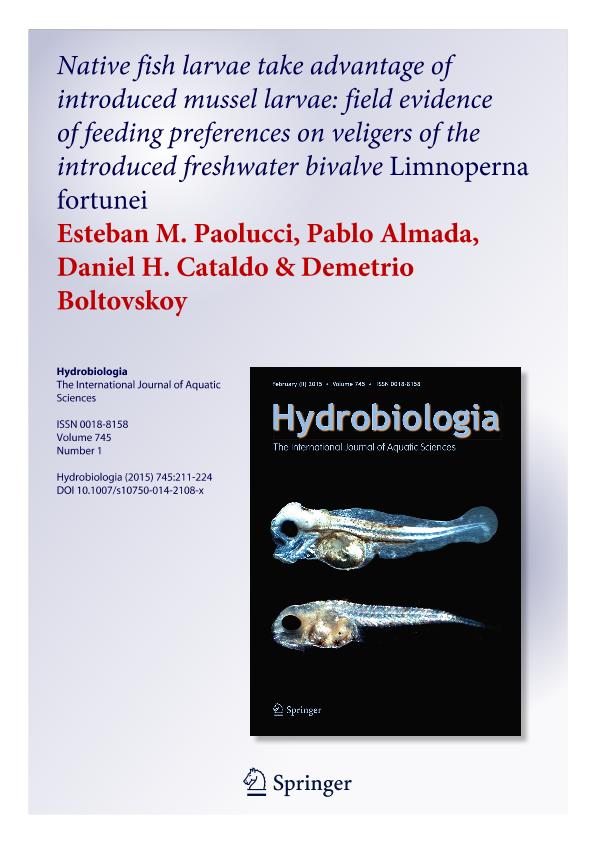Artículo
Native fish larvae take advantage of introduced mussel larvae: field evidence of feeding preferences on veligers of the introduced freshwater bivalve Limnopernafortunei
Fecha de publicación:
02/2015
Editorial:
Springer
Revista:
Hydrobiologia
ISSN:
0018-8158
e-ISSN:
1573-5117
Idioma:
Inglés
Tipo de recurso:
Artículo publicado
Clasificación temática:
Resumen
Previous work has shown that the invasive bivalve Limnoperna fortunei has had a measurable impact on local food webs, but knowledge of the trophic interactions involved is still very limited. On the basis of samples collected along the lower Paraguay-middle Parana´ rivers, we studied the feeding behavior and selectivity of larval fish, with emphasis on veligers of the introduced bivalve L. fortunei. Among feeding larvae (i.e., without a yolk sac), 16.5% had only Limnoperna veligers in their guts, while 15.6% had veligers and some other prey. Half of the fish taxa recorded (8 out of a total of 16) consumed Limnoperna veligers. The Paraguay and Parana´ rivers differed strongly in the proportions of fish larvae that consumed veligers: 14 and 68%, respectively. This difference paralleled the availability of veligers in the water column, which was significantly lower in the Paraguay (0.8 ± 0.5 ind. l-1 ) than in the Parana´ River (5.5 ± 2.3 ind. l-1 ). Conversely, cladocerans, originally the staple food of fish larvae, were more abundant in the Paraguay (consumed by 48% of the individuals) than in the Parana´ River (26%). These results indicate that, when widely available, Limnoperna veligers largely replace the original prey of fish larvae, especially in their younger stages (protolarvae).
Archivos asociados
Licencia
Identificadores
Colecciones
Articulos(IEGEBA)
Articulos de INSTITUTO DE ECOLOGIA, GENETICA Y EVOLUCION DE BS. AS
Articulos de INSTITUTO DE ECOLOGIA, GENETICA Y EVOLUCION DE BS. AS
Articulos(MACNBR)
Articulos de MUSEO ARG.DE CS.NAT "BERNARDINO RIVADAVIA"
Articulos de MUSEO ARG.DE CS.NAT "BERNARDINO RIVADAVIA"
Citación
Paolucci, Esteban Marcelo; Almada, Pablo; Cataldo, Daniel Hugo; Boltovskoy, Demetrio; Native fish larvae take advantage of introduced mussel larvae: field evidence of feeding preferences on veligers of the introduced freshwater bivalve Limnopernafortunei; Springer; Hydrobiologia; 745; 1; 2-2015; 211-224
Compartir
Altmétricas




